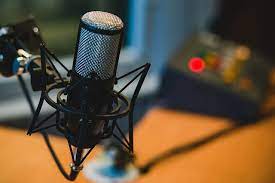
How to Start a Podcast in 12 Steps, Plus More Info!
The podcasting industry is fast growing. Numerous online sources dated 2023 state that the podcasting industry is growing at an average rate of between 27% to 32%.This is a very good rate considering that industries that have 10% yearly growth are already considered very profitable industries by finance and investment experts.
But we don’t have to look far than to note the earnings of podcasting poster boy Joe Rogan who reportedly earns USD 100,000 per podcast episode. He reportedly earns USD 48 million per year once all his sources of podcasting revenue are added up.
As you can see, podcasting can become a very profitable career or business for anyone. But how do you really start a podcast? Here are a few steps and more information about podcasting:
Summary of “How to Start a Podcast in 12 Steps, Plus More Info!:
1. Why Start a Podcast?
1.1 More and More People are Listening to Podcasts1.2 Many People Prefer Podcasts to Reading
1.3 Most podcasts can be created with little to no money
1.4 Low barrier to entry
2. Making Money from Your Podcast
2.1 Ads2.2 Sponsorships
2.3 Affiliate Sales
2.4 Selling Your Own Products
2.5 Direct Support
3. Steps in Starting a Podcast
3.1. Research the Industry3.2. Create Your Podcast Theme
3.2.1. Is the theme broad enough?
3.2.2. Are you genuinely interested in your podcast theme?
3.2.3. What is your goal for your podcasts?
3.2.4. Who is your podcasts for?
3.2.5. What’s your differentiating factor?
3.3. Create Your Podcast Format
3.3.1. Interviews
3.3.2. News
3.3.3. Educational
3.3.4. Scripted
Tips
3.4. Create Your Podcast Brand
3.4.1. Your Podcast Name
3.4.2. Podcast Description
3.4.3. Podcast Category
Tip
3.4.4. Podcast Episode Descriptions
Tips
3.4.5. Podcast Cover Art
Tips
3.5. Acquire Your Podcasting Equipment
3.5.1. Microphones
3.5.1.1. USB Microphones
3.5.1.2. Dynamic Microphones
3.5.1.3. Condenser Microphones
Tips
3.5.2. Pop Filter
3.5.3. Desktop Microphone Stand
3.5.4. Shock Mount
3.5.5. XLR Connections
3.5.5.1. Audio interfaces
3.5.5.2. Directly attach your XLR microphone to an external audio recording device
3.5.5.3. Podcast machine
3.5.6. Headphones
3.5.7. Soundproofing
3.6. Acquire Your Podcasting Softwares
3.6.1. Audio Editing Softwares/Apps
3.6.2. Phone Conversation Recording Softwares/Apps
3.7. Outline Your First Podcast
3.8. Record Your Intro and Outro
3.8.1. Intro
3.8.2. Outro
3.9. Record Your Podcast
3.9.1. Find a Quiet Area/Situation
3.9.2. Prepare Your Audio Equipments
3.9.3. Set Your Audio Volume Level
3.9.4. Record a Minimum of 30 Seconds of Silence
3.9.5. Record Your Audio
3.9.6. Test Your Recording
3.10. Refine Your Podcast
Tips
3.11. Join a Podcast Hosting
3.12. Market Your Podcast
3.12.1. Use Social Media
3.12.2. Have Multiple Podcast Episodes
3.12.3. Grow Your Subscription List
3.12.4. Create Audio Snippets
3.12.5. Ask Your Listeners and Guests to Spread the Word
3.12.6. Be a Guest in Other Podcasts
Final Words
The Details:
1. Why Start a Podcast?
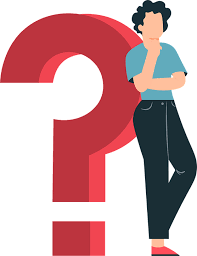 More than the potential to earn a lot of money from podcasting, there are other advantages to starting a podcast:
More than the potential to earn a lot of money from podcasting, there are other advantages to starting a podcast:
1.1 More and More People are Listening to Podcasts:
Statista, a leading industry research firm stated that at least in the US, 38% of the population has listened to a podcast at least once a month. It estimates that the number of people in the US listening to podcasts would reach over 100 million by 2024.
1.2 Many People Prefer Podcasts to Reading:
Since you consume a podcast by just hearing it, you don’t need to watch or read it unlike a video or a text content. Many podcast listeners listen to podcasts while watching something else or doing something with their hands.
This makes podcasts very handy to consume. This is one of the main reason why the number of people consuming podcasts have been growing very fast. If you are having problems growing the number of your consumers on your video or text products, it might be time to try podcasting.
1.3 Most podcasts can be created with little to no money:
Just like many digital products, you can create one spending only a small amount of money. At times, you can even create a podcast for free.
For example, you can record your raw audio on your smartphone, and then just upload it to a podcast hosting. As you can see, at the minimum, all you need is your smartphone and an internet connection to be a podcaster.
1.4 Low barrier to entry: Anyone can start a podcast.You don’t need an education degree to be a podcaster. All you need at the minimum is a knowledge of how to record audio and the ability to navigate a podcast hosting site. These are skills that a teenager or even a child can do.
Back To Summary List
2. Making Money from Your Podcast
 Perhaps you want to be the next Joe Rogan and become a multimillionaire yourself. Here are a few ways of how to make money from your podcast:
Perhaps you want to be the next Joe Rogan and become a multimillionaire yourself. Here are a few ways of how to make money from your podcast:
2.1 Ads:
Ads are the staple income source of many digital products which includes podcasts. Companies would pay you when you run their advertisements in your podcasts.
If you are unfamiliar with podcast ads, they’re identical to the ads that you hear on your radio. They are usually played in the beginning, middle and/or ending of podcasts. At times, they are played at regular intervals in podcasts.
2.2 Sponsorships:
Podcasters also earn by promoting the sponsors of their podcasts. The money a podcaster earns from sponsorships depends on how many times their podcasts are downloaded.
Sponsors typically pay on a cost-per-1,000 views or CPM basis. The rates usually range between USD 18.00 to USD 50.00 .
2.3 Affiliate Sales:
You earn a commission whenever a customer buys a product from a company running an affiliate marketing campaign.
With this monetization method, rather than making money per download, you would typically make a percentage of what you sell for the company you’re promoting.
2.4 Selling Your Own Products:
You can also sell your own products via your podcasts. You can sell a service, digital products, physical products, and so on.
Take note that when you sell physical products, you would also have to deal with inventories, deliveries and other business tasks associated with physical products.
2.5 Direct Support:
You can call this as fundraising, begging, and so on. However, this simply means asking people for donations in order to support the financial costs of your podcasting activities.
Although it might seem embarrassing to ask people for donations, aka begging, this is also a staple in the monetization of digital products.
Back To Summary List
3. Steps in Starting a Podcast
3.1. Research the Industry
 Most businesses that don’t have a business plan to begin with, usually fail. That is why even before you begin podcasting, you should study the podcasting industry.
Most businesses that don’t have a business plan to begin with, usually fail. That is why even before you begin podcasting, you should study the podcasting industry.
You should know who are the top podcasters and the top podcasts. By knowing this, you would have a grasp on what podcasts consumers are actually listening to. You can pattern your podcasting business after these top podcasters to strengthen your chances of success.
This is especially helpful in determining what sort of subjects you would be discussing about in your podcasts. Don’t just podcast about a subject just because you like it. You should also consider if the subject is something that people actually listen to.
Afterall, for the majority of podcasters, they’re podcasting to earn money or at least hope to earn enough money to support their podcasting activities.
Back To Summary List
3.2. Create Your Podcast Theme
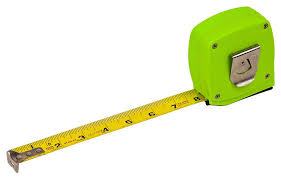 There are many factors to consider when creating a theme for your podcast. A podcast theme unifies all the episodes of your podcast. A podcast theme is what your listeners expect to hear from each of your podcast episodes:
There are many factors to consider when creating a theme for your podcast. A podcast theme unifies all the episodes of your podcast. A podcast theme is what your listeners expect to hear from each of your podcast episodes:
3.2.1. Is the theme broad enough?
If you choose a podcast theme that’s too narrow, you’ll find yourself running out of podcast episodes to make. This is because you would have discussed just about everything there is to know about your narrow podcast theme.
To check if your podcast theme is broad enough, list down all the possible podcast episodes you can think about your podcast theme. If you can’t even make a 100 podcast episodes, your podcast theme might be too narrow.
3.2.2. Are you genuinely interested in your podcast theme?
Again, it greatly helps if you are genuinely interested in the theme of your podcast. Remember, if your podcast happens to be successful, you’ll likely be doing it for years. Being miserable doing podcasts you hate is a bad way to spend years of your life.
Also, being genuinely interested in your podcast theme would help you to tide over the low points of your podcasting business. This is because you genuinely like what you are doing and would probably forgo monetary rewards just to do it.
3.2.3. What is your goal for your podcasts?
You must have a goal as to why you’re doing your podcast. It helps you to define the direction you would take when making your podcasts.
There are many kinds of goals. Your goal might be to make money, to be known as an authority in something, to help people, and so on. Your podcast episodes must point towards these goals.
3.2.4. Who is your podcasts for?
Knowing your intended audience or customers is a pivotal part in the success of your podcasting business. It helps you to tailor the contents of your podcasts according to your audience or customers.
For example, if your podcasts are aimed at seasoned professionals and not amateurs, you would have to tailor your podcasts such that you discuss the advanced and not the basic subjects of your podcast theme.
This would show your audience or customers that you respect their intelligence and is not wasting their time by refusing to talk about the basic things they already know.
3.2.5. What’s your differentiating factor?
To have a chance of attracting audiences, your podcasts should have a factor that makes them stand out from the sea of other podcasts.
For example, you can have podcasts that discuss subjects that are considered niches and seldom discussed. This would set your podcasts apart from the other podcasts that talk about similar and more familiar subjects.
Back To Summary List
3.3. Create Your Podcast Format
 You should also know what podcast format best attracts your intended audience and suits best your podcast theme. Here are a few podcast formats you could consider:
You should also know what podcast format best attracts your intended audience and suits best your podcast theme. Here are a few podcast formats you could consider:
3.3.1. Interviews: This format feature a single or more hosts interviewing one or more guests.
3.3.2. News: Podcast episodes are read out like news.
3.3.3. Educational: The aim of this podcast format is to inform and/or teach.
3.3.4. Scripted: Podcasts that strictly follow a script.
Tips:
- The length of your podcast must be long enough to give your audience value, but not unnecessarily long that your audience would find it boring.
- Podcasting consistency and not volume is important. To cultivate the habit of your audience to listen to your podcast, they must be able to predictably know when your podcasts are released.
If you inconsistently release your podcasts, your audience will never know when to listen to your podcasts, resulting in them not developing a habit to listen to your podcasts.
Back To Summary List
3.4. Create Your Podcast Brand
 Another important component of business is branding. This establishes the identity of your podcasting business. Here are a few things you need to do to establish your podcasting business brand:
Another important component of business is branding. This establishes the identity of your podcasting business. Here are a few things you need to do to establish your podcasting business brand:
3.4.1. Your Podcast Name:
Your podcast name is your audience’s gateway to your podcast. Whenever they are searching for your podcast, they would use your podcast’s name as a search query.
The name of your podcast is what your audience utter to people whenever they want to speak about your podcast.
Tips: - The shorter the podcast name, the better. Make it four words at most.
- It must be concise and interesting/intriguing,
- It must be easy to write, spell and pronounce.
- You must not be embarrassed to say it.
- It must not be offensive.
- It is unique and not used yet.
3.4.2. Podcast Description:
Many podcasts include a short description which acts like a “hook” besides their podcast name. Just like a podcast name, it must not be unnecessarily long, must be concise & interesting/intriguing, it must be easy to read & pronounce, and so on.
Make sure to include keywords which would make it easier for your audience to find your podcast, but avoid “keyword stuffing” or you’ll likely be penalized.
3.4.3. Podcast Category:
How you setup the category of your podcast has a big effect in how searchable your podcast would be. There are simply podcast categories that are more popular with audiences than others.
Also, if the category you choose is completely irrelevant to the content of your podcast, you run the risk of your podcast being removed from some podcasting directories.
Tip:
According to Spotify, as of 2022, the fastest growing podcast categories are: Health & Fitness, History, Music, and Religion & Spirituality.
3.4.4. Podcast Episode Descriptions:
Writing a good podcast episode description is very important. Just like your podcast name and podcast description, your podcast episode description is what your potential audience sees even before they decide to listen to your podcast.
The contents of your podcast episode description will most likely be the deciding factor in making your audience listen or don’t listen to your podcast.
Each podcast app has a different character limit for podcast episode descriptions. For example, Apple Podcasts has 4,000 characters. But remember the rule: keep your name and descriptions short but as concise and interesting/intriguing as possible.
Very long descriptions can bore or even intimidate your potential readers. Words quantity is not a substitute for words quality.
Tips:
- Many potential audiences are intrigued by questions, if possible ask one.
- Potential audiences want to know beforehand what your podcast is about, try to describe it at the onset.
- Give your potential audience a reason to listen to your podcast.
- Remember that search engines also index podcasts, use keywords as much as possible without overdoing it.
3.4.5. Podcast Cover Art:
Don’t always believe the saying: “Don’t Judge a Book by its Cover”. Unfortunately, most people do judge things based on their looks. This includes podcast cover art.
Yours must be inviting, interesting/intriguing, and must stand out from the rest of the other podcasts.
Tips:
- Your cover art should be between 1,400 pixels by 1,400 pixels to 3,000 pixels by 3,000 pixels.
- Compress your files so that your audience can load your podcast faster before they lose interest.
- Don’t use a lot of words in your podcast cover art.
- You can create your cover art for Free/Freemium using graphics softwares like Canva.
- If you have the money, you can hire graphics art experts in Fiverr, 99Designs and other freelancing sites for a reasonable amount.
Back To Summary List
3.5. Acquire Your Podcasting Equipment
 The importance of producing high audio quality podcasts cannot be overemphasized enough. Your podcasts might be important and interesting, but if the audio quality of your podcast is poor, chances are, your listeners would stop listening to your podcasts.
The importance of producing high audio quality podcasts cannot be overemphasized enough. Your podcasts might be important and interesting, but if the audio quality of your podcast is poor, chances are, your listeners would stop listening to your podcasts.
Sure you can use your smartphone to record audio, but there is a high chance that you’ll only be able to create poor audio from it. That’s why its important that you invest in high quality audio equipment:
3.5.1. Microphones:
There are three major types of microphones out there which are available to podcasters:
3.5.1.1. USB Microphones
These are the most affordable microphones out there. All you need is to plug them in your computer and/or smartphone, open up your audio recording software, and start recording audio.
They are the most affordable microphones and arguably the easiest to work with, but they have the lowest audio quality as compared to the other microphones about to be mentioned here.
3.5.1.2. Dynamic Microphones
These microphones filter out background noise which is good if more than two people are speaking and there is a lot of background noise.
They are often used by broadcasters, musicians, radio announcers and of course by podcasters because they don’t require external power and are also durable.
However, their ability to filter background noise comes at a price. This is because they lack audio sensitivity. You need to keep your mouth close to the microphone to ensure that you have a consistent level of recording.
3.5.1.3. Condenser Microphones:
Also called as “Capacitor Microphones”, these microphones are well known for their superior audio sensitivity and quality. These microphones require 48V batteries to operate but are well suited for quiet, sound-treated spaces. They are also very sensitive.
Tips:
Although the audio recording quality of your smartphone is inferior to the abovementioned microphones, there are several apps that can help you get better audio recording quality from your smartphone:
- Podcast Hosting Services like Podbean and SoundCloud offer in-app podcast recording capabilities.
- Audio Recording Apps that can improve your audio recording capabilities include: Spreaker and iRig Recorder.
3.5.2. Pop Filter
This device help filter out the clicking noises your mouth makes whenever you are speaking close to the microphone. It prevents the sound of “plosives”, which applies to harsh sounding consonant letters like p’s and b’s.
They are also very affordable, costing about USD 5.00 to USD 20.00 each in the US. So, there’s no excuse not to have them.
3.5.3. Desktop Microphone Stand:
Also called as ”Boom Pole”, their “arms” help keep your podcast microphone a good distance in front of you, such that you can literally record hands free.
They also easily allow you to adjust the distance between your microphone and your mouth. This enables you to move around while you podcast. This also enables you to hide your microphone when its not in use. This is very handy if you’re recording at your home office desk.
3.5.4. Shock Mount:
This device suspends the microphone to prevent vibrations. Usually, microphone companies also offer these devices besides their microphone products.
However, there are specialist shock mount manufacturers like Rycote that works with microphones of different sizes and shapes.
3.5.5. XLR Connections: XLR stands for ”External Line Return”, it is a type of electrical connector found primarily in professional audio, video, and stage lighting equipment. Condenser and Dynamic Microphones usually require an XLR connection.
There are three usual ways to get around this problem:
3.5.5.1. Audio interfaces:
They are devices that expand and improve the sonic capabilities of a computer, making them able to connect with professional microphones. They go in between your computer and other audio devices, making audio pass to and fro between them.
3.5.5.2. Directly attach your XLR microphone to an external audio recording device:
External audio recorders save your audio to an SD card or other memory storage devices. You can then upload the stored audio to your computer for editing.
This means that you can record independent of your computer while being able to host your podcast anywhere.
3.5.5.3. Podcast machine:
There are companies that specialize in podcasting equipment and create standalone podcast machines that enable you to record, edit, add effects, and control your entire podcasting process. However, these machines are expensive and are more suited to advance podcasters.
3.5.6. Headphones:
They complement your microphones and enables you to test the audio quality of your podcast. The best headphones are over-the-ear headphones as they filter out background noise, have better audio quality, and are more comfortable to use.
3.5.7. Soundproofing:
You can invest on soundproofing to make background noise disappear. This is especially important if you are located in a noisy area, like when there is a lot of traffic noise, industrial noise, construction noise, noisy neighbors, and so on.
Back To Summary List
3.6. Acquire Your Podcasting Softwares
 Your podcasting software is just as important as your podcasting equipments. For example, you would need software for audio recording and audio editing.
Your podcasting software is just as important as your podcasting equipments. For example, you would need software for audio recording and audio editing.
3.6.1. Audio Editing Softwares/Apps:
There are free softwares and apps available like Zoom, but its better if you invest in high quality softwares/apps:
Some audio recording softwares you can use are: Adobe Audition, Audacity, and GarageBand (free for Mac computers).
3.6.2. Phone Conversation Recording Softwares/Apps:
If you are conducting phone interviews, you need softwares/apps that record you phone conversations. If you’re using a mixer that records all the audio from your computer, you probably don’t need these software/apps.
However, if you only have a basic setup and is using such softwares/apps like Skype only, It is highly recommended that you use phone conversation recording softwares/apps like Callnote, Dialpad AI Meetings, Zencastr, and so on.
Back To Summary List
3.7. Outline Your First Podcast
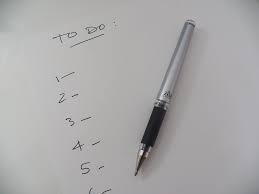 A great podcast is made up of great podcast content and audio performance. Your podcast doesn’t only need to sound great, it also needs to be worth listening to. A great podcast outline is a good way to ensure that you deliver great podcast content.
A great podcast is made up of great podcast content and audio performance. Your podcast doesn’t only need to sound great, it also needs to be worth listening to. A great podcast outline is a good way to ensure that you deliver great podcast content.
Unless your podcast is actually a scripted one where not one word needs to deviate from your outline, you don’t need to have a script for your entire podcast. You just need an outline for yourself to follow.
You should start with the end in mind. Your outline must fulfill the purpose of your podcast, such as what message you want to impart to your listeners. Creating a visual picture of your listener could help you make your podcast outline.
A good outline usually includes an initial “Hook/Teaser” to initially grab your audience’s attention. This is followed by an Intro, Listener Greetings, Episode Overview, Transitions, Breaks, Call to Action, and an Outro.
A more detailed outline would also be composed of News, Interviews and Ad Spots. This would show your listeners and guests that you have a well planned and organized podcast.
Back To Summary List
3.8. Record Your Intro and Outro
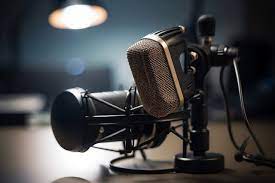 Even before you record your first podcast, you should already start recording the basics of your podcast which includes your podcast’s intro and outro. These two would be the most used audios in all your podcast episodes so they better be good.
Even before you record your first podcast, you should already start recording the basics of your podcast which includes your podcast’s intro and outro. These two would be the most used audios in all your podcast episodes so they better be good.
3.8.1. Intro:
A good podcast intro should tell who you are. In one or a few sentences, you should be able to introduce yourself to your listeners including your experience and why your words matter.
You should also be able to clearly and concisely tell your listener the purpose of your podcast and its benefit to listeners.
3.8.2. Outro: A good podcast outro should thank your listeners for taking their time to listen to you. It should also include your tagline and your call to action, which is informing your users what to do next.
For example, you can ask your listeners to leave a feedback/review or a rating, donate to your podcast, follow you in social media, subscribe to you, and so on. However, don’t overdo your call to action by asking your audiences to do a lot.
Back To Summary List
3.9. Record Your Podcast
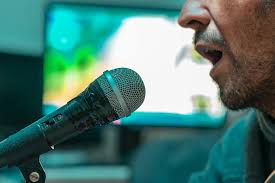 Recording a podcast might sound hard and intimidating, but not if you follow these simple steps:
Recording a podcast might sound hard and intimidating, but not if you follow these simple steps:
3.9.1. Find a Quiet Area/Situation:
Noise is the biggest enemy of podcasters. Even a few seconds of noise can ruin an hours long podcast. So, find a quiet area and/or situation where most of the noise in your environment don’t exist.
This could mean shutting all the doors and windows in a room of your house, even up to the point of installing soundproofing.
You could also schedule your podcast during the dead of night when everyone is mostly sleeping and every activities that generate noise have stopped for the day.
3.9.2. Prepare Your Audio Equipments:
Make sure that the audio from your microphone is being sent to your computer. Check if all your equipment is plugged to their power supply and are running.
3.9.3. Set Your Audio Volume Level:
Make sure that your audio volume level is not too quiet or too loud. If your volume level is too quiet, your listeners would find it hard to understand your audio. If its too loud, your audio might be distorted or too irritating.
Set up your audio equipment’s volume meter to halfway. In some meters, the color of this band would be yellow. It should be about -20 dB.
Try to speak or even laugh very loud just to see if the meter passes the 0 dB mark or the red band in some meters. If it does, you probably have set your audio equipment too loud.
3.9.4. Record a Minimum of 30 Seconds of Silence:
This would help you know what kind of background noise is present in your podcasting area. This would help you find solutions to eliminate them.
3.9.5. Record Your Audio:
Make sure that your initial recording is a high-quality WAV or AIFF file to compensate for “Compression Artifacts” which are noticeable sound distortions that compound over time. Resolutions of 24 bit/48 kHz are considered good.
Although you’ll probably be uploading your podcast as an MP3 or AAC for distribution, its best to start off with a high resolution format.
Also, you need to be consistent to where you place your mouth in relation to your microphone. This is because you don’t want inconsistent volume levels. Try setting your microphone slightly to the side of your mouth, so that bursts of air don’t go directly to the microphone’s diaphragm.
But don’t set it up at too extreme of an angle. Otherwise, you will be working against the pickup pattern of directional microphones.
3.9.6. Test Your Recording:
Try listening to your audio record through various audio output devices like earphones, headphones, smartphones, laptops, car and home speakers, and so on. This way, you’ll have a general idea of how your audio record sounds like and you can do adjustments if necessary.
Back To Summary List
3.10. Refine Your Podcast
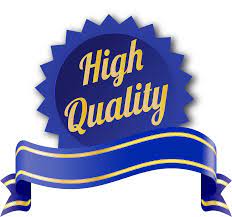 You can edit your podcast to smoothen out your audio, add your intro and outro, add your ads and so on. You could also remove the audio mistakes you made while recording your audio.
You can edit your podcast to smoothen out your audio, add your intro and outro, add your ads and so on. You could also remove the audio mistakes you made while recording your audio.
Editing your audio is time consuming and might even be boring, but it is an essential part of podcasting.
By editing your audio, you would be able to cut out the non-essential parts of your podcast so that only the good parts remain, making your listener’s experience even better.
Here are some podcast audio editing tips:
- Use a noise filter.
- Remove audio gaps or long periods of silence.
- Make audio transitions as smooth as possible, for example, by using crossfading.
- Use high-pass filters: Since most human voices don’t generate any fundamental audio frequencies below 85 Hz, you can set a high-pass filter around 80 to 100 Hz to remove unwanted audio.
- Use audio equalization: There are certain audio frequencies that spike during audio recordings. To compensate for these, don’t cut or boost audio frequencies to more than 6 dB. This would make your recording sound more natural.
- Use audio compression: Your loudest audio frequencies can be brought closer to your average volume by using audio compression. It is advisable that you use a ratio of 2 to 1.
- Use a de-esser: The harsh presence of “s” and “t” consonants is a common audio recording problem called ”Sibilance”. A de-esser smoothens out the effect of sibilance.
- ”Peak Level” is the volume level before your audio starts to distort. Generally, a peak level of -1 dB is good for podcasts.
Your RMS or “Root Mean Square” level is the average level of your signal. An RMS level of around -16 dB to -12 dB is considered a great range.
Back To Summary List
3.11. Join a Podcast Hosting
 You would need a podcast hosting platform before you can make your podcasts available to podcast platforms and your audiences. You can use such podcast hosting platforms like: Buzzsprout, PodBean, and Transistor.
You would need a podcast hosting platform before you can make your podcasts available to podcast platforms and your audiences. You can use such podcast hosting platforms like: Buzzsprout, PodBean, and Transistor.
You can then submit an RSS feed which is a standardized way to syndicate your podcast to podcast directories. It adds the necessary codes to ensure your listeners see your podcast titles, descriptions, as well as to hear your podcast audio file.
If you’re using a podcast hosting platform like Transistor, it automatically submits your podcast to all the major directories, simplifying your work and saving your time.
The most popular podcast directories are: Amazon Music, Apple Podcast, Deezer, Google Podcasts, SoundCloud, Spotify, Stitcher and YouTube, but there are still others and you are free to use all of them as much as you want.
Back To Summary List
3.12. Market Your Podcast
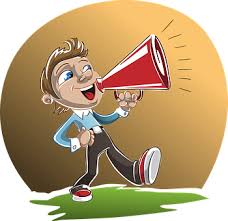 If you want your podcast to be successful, you cannot just sit back and wait for listeners to discover your podcast. You must also market your podcast. Here are a few tips on marketing your podcast:
If you want your podcast to be successful, you cannot just sit back and wait for listeners to discover your podcast. You must also market your podcast. Here are a few tips on marketing your podcast:
3.12.1. Use Social Media:
Social Media is great for advertising your podcast, creating a buzz and engaging your audience. Its no wonder that many podcasters also have an active social media account.
3.12.2. Have Multiple Podcast Episodes:
All the buzz and interest you created with your podcast is useless if you leave your listeners wanting. Launch with as many podcast episodes as you can simultaneously. This is also a sign to your audience that your podcast has many more episodes to come.
3.12.3. Grow Your Subscription List:
Right at the onset, ask your listeners to subscribe to you, every listener who listens once and never listens again is a missed opportunity.
Also, encourage them to leave a review to grow your online stats and also to have a chance of being noticed and featured by your podcast platform.
3.12.4. Create Audio Snippets:
Slice your podcast content into tiny snippets for distribution into social media and other online platforms. By doing this, you give potential listeners a sample or ‘taste’ of your podcast content.
3.12.5. Ask Your Listeners and Guests to Spread the Word:
Organic word of mouth is a very effective marketing tool that many marketers don’t use effectively. You can ask your listeners and guests to spread the word that you have a podcast worth listening to.
3.12.6. Be a Guest in Other Podcasts:
Being a guest in other podcasts especially well listened ones could be your big chance at developing a large listener base in just a short time. Being associated with a well known podcaster or podcast can exponentially increase your listener numbers.
Back To Summary List
Final Words
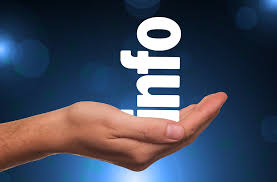 The podcasting industry is growing at a much, much faster rate as compared to other fast growing industries.
The podcasting industry is growing at a much, much faster rate as compared to other fast growing industries.
This is because listening to podcasts is much, much more convenient to reading and watching other media content like text media and videos.
But just like any business, there are already well proven steps to increase your chances at succeeding. It is advised that you follow them.
But one thing is for sure, you need to have sufficient interest in podcasting and your podcast subject to stay in the podcasting business for a very long time, even during the downturns.
Back To Summary List
You Might Be Interested To Read This Article:
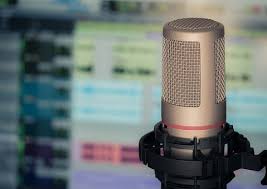
Do You Have What it Takes to be an Audiobook Narrator?
The audiobook industry is a booming market. In many parts of the world it has consistently been growing at double digit rates on a yearly basis. While the best audiobook productions are made in studios there are jobs that can be done at home. The job or business promises independence and good pay. But are you suited for the job? Here are what you should consider:...